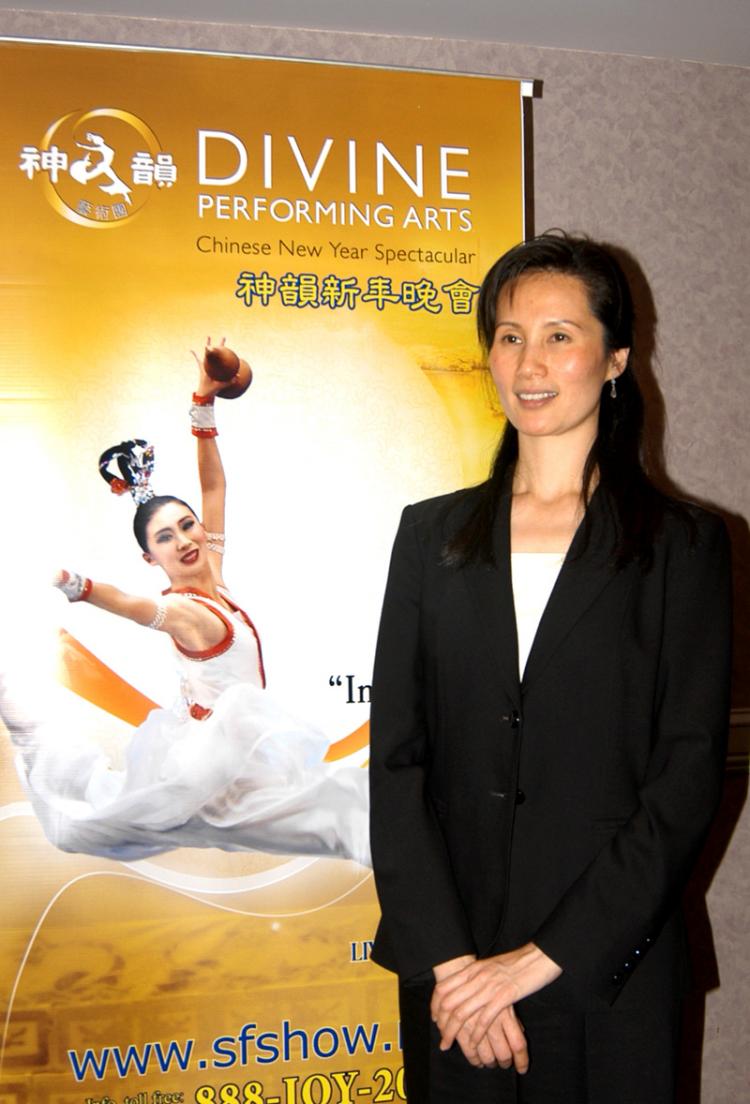SAN FRANCISCO—When the Divine Performing Arts show came to a gratifying close at the historic San Francisco Orpheum Theatre last year, performers received sustained standing ovations and flower bouquets from the electrified audience.
This year, the organizers of the multi-million dollar production of the family-oriented Chinese New Year Spectacular show promise to score even higher in audience ratings during the 2008-09 touring season.
Last season more than 600,000 people saw the show in 66 cities worldwide, including 12,000 at San Francisco’s Orpheum Theatre.
Following a successful series of shows in Geneva, Switzerland, Divine Performing Arts’ choreographer Vina Lee arrived in the San Francisco Bay Area recently to reveal production differences which set this show apart from other Chinese shows.
“The Chinese New Year Spectacular touches people’s hearts more than any other show,“ says Lee. ”It goes directly to the ancient roots of traditional Chinese dance and culture.”
“But, some of the current shows from mainland China have some contemporary movements mixed in with traditional elements creating chaotic and impure forms of dance. Audiences dislike this and end up getting an incorrect impression of the traditional movements.”
“We specifically focus on the traditional culture,” says Lee.
This season’s show will transport audiences back on a swift exploration of China’s 5,000-year-old cultural civilization. Depicting plush scenes from China’s imperial court during different dynasties, the show performances will include heroic myths and legends based on morals from the Middle Kingdom (China), lead dancer Lee revealed.
“I believe that as an artist, we have the responsibility to bring people not just a show but to provide meaning behind it, to uplift morality, loyalty, filial piety as in the story of Yue Fei—where the audience is almost always in tears. These virtues and principles apply to any society,” Lee said. Last year, Lee played the mother of the famous Chinese General Yue Fei from China’s Song Dynasty.
Fifteen different performances will comprise each of this year’s shows, according to Lee.
A choreographer and lead dancer with Divine Performing Arts, Lee comes from China’s top dance school—The Beijing Academy of Dance—and had appeared in several television show series in Australia. She has performed with Divine Performing Arts, headquartered in New York, ever since its first Chinese New Year Spectacular show in 2004.
Lee recalls two shows in Pusan, South Korea, where Korean monks attended the shows and cried, being very touched by the show. She also remembers when some shows in South Korea were canceled due to pressure from China’s communist authorities who were angry with two of the more contemporary programs revealing the truth of their fanatical persecution of the spiritual practice Falun Gong.
In Chinese classical dance, through martial arts forms, warriors and performances, and style, have been preserved elements which can be best described as a way of moving, looking, how one carries oneself for generations, integrated in traditional imperial court dances and folk dances.
“This is what we are now getting back in its original form through our performances, and that is what moves people the most and what makes people enjoy our shows,” Lee explained.
Lee said that in martial arts the movements are shorter and faster, while in dance they are very similar, but longer, slower, and more graceful.
“Same, but different,” says Lee.
The Chinese New Year Spectacular returns to San Francisco’s Opera House (Jan. 7-11, 2009) and to Cupertino’s Flint Center (Jan. 13-15, 2009).
For more information on the show please visit: www.divinearts.org








Friends Read Free